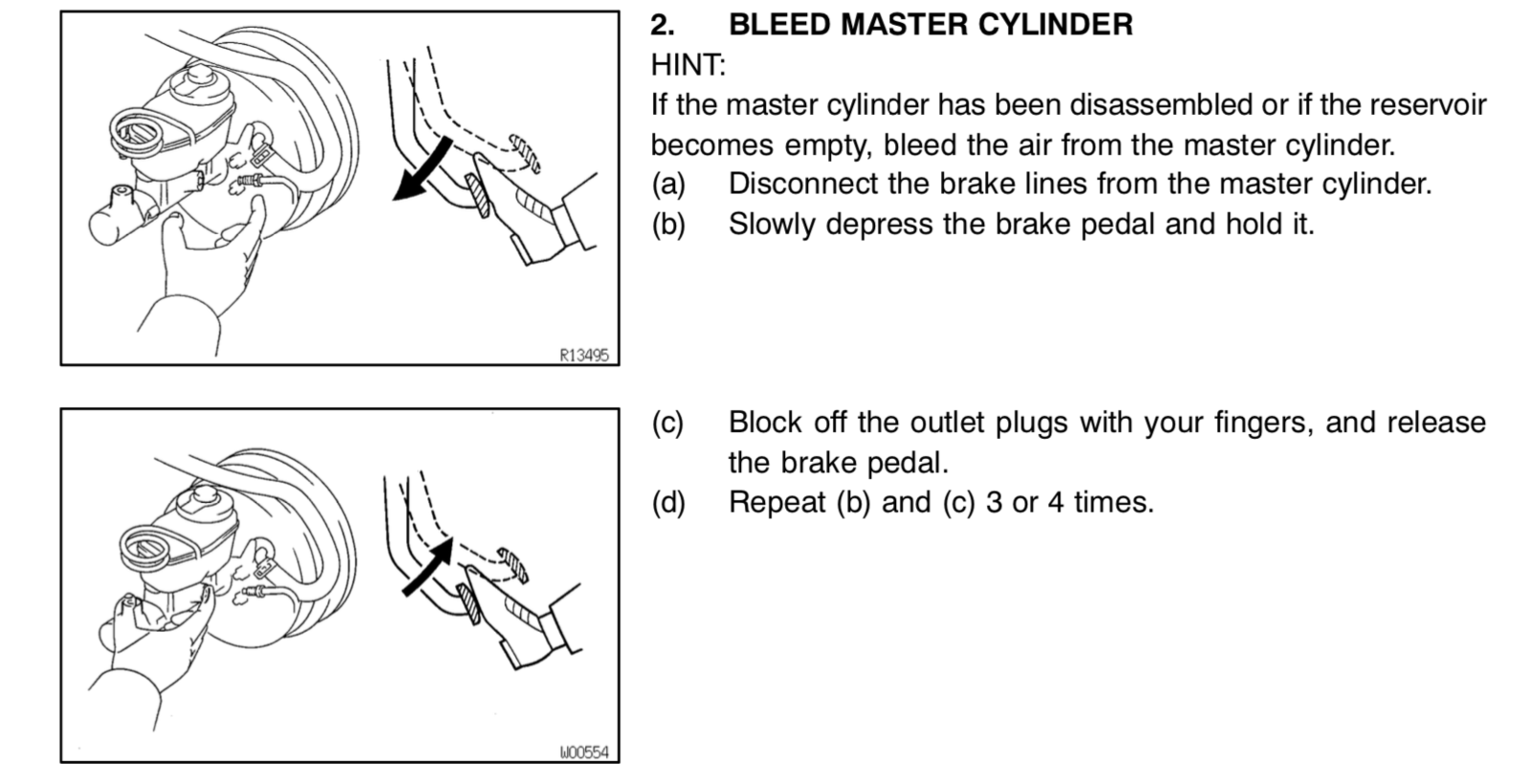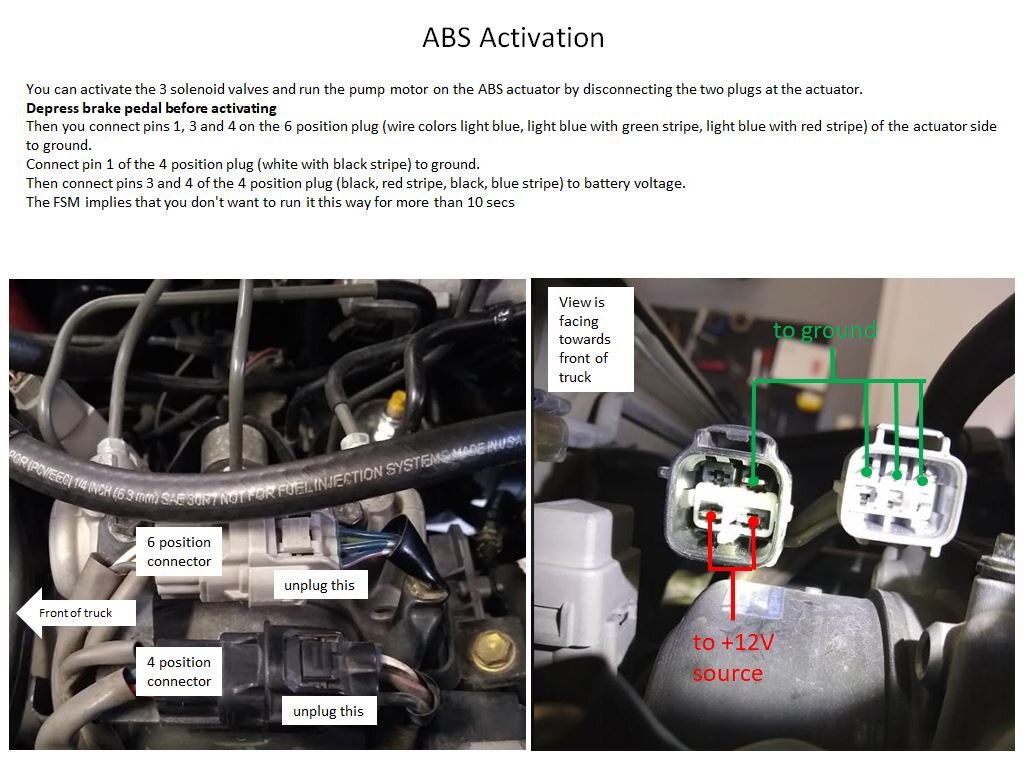nielsc
Well-Known Member
- Joined
- Jun 28, 2016
- Messages
- 226
- Country Flag
I really did not want to open another spongy brakes thread, but after reading so many threads on here and Mud and not finding an answer I am a bit out of options.
My 80 has had the low spongt brake pedal for years, and for some reason I figuered it was just an 80 thing, untill a drove a couple of other 80s that all have a nice and firm brake pedal and have much more stopping power then mine.
Parts replaced are:
Front and rear brake calipers rebuilt + new pads
I've replaced the master cylinder with an aftermarket unit (OEM unavailable here)
Replaced the LSPV since it was totally rusted and could not open the bleeder without snapping it. Since brake lines at LSPV were in the same condition, I've made those out of copper brake line with double flared ends.
All flexi hoses have been replaced with braided steel hoses aswell. (So I cannot clamp of the rubber lines to see if things improve)
I've bled and bled and bled for a lot of times with a pressure bleeder at 25PSI , whilst bleeding with the pressure bleeder I pumped the brake pedal several times with the bleeder open.
I tried all possible sequences bleeding the calipers and LSPV, I've activated the ABS a dozen of times on a stretch of unpaved road, and bled some more.
I still have the same spongy pedal I had before.
2 things I have noticed:
-When I moved the LSPV arm completly up and moved LSPV down on the bracket, and even with the ABS fuse removed, I am unable to lock up the rear wheels when braking hard, even on wet grass!
This make me think there still is air somewhere in the system.
-When pumping the brake pedal with the engine off it gets quite hard, pumping with the engine on makes it spongy, and when pressing hard enough will always sink to the floor slowly, even after pumping it up several times.
The only thing I can think of that is causing me these issues is the ABS actuator.
Is it possible these units are impossible to bleed, or leak internally.
One thing I'm going to try is put the car on 4 jack stands and run it so I can activate the ABS while pressure bleeding it, see if it makes difference.
Other than that I'm thinking of either removing the ABS pump or buy another used one to try it, but might be a waste of money.
Any opinions or help is greatly appreciated!
My 80 has had the low spongt brake pedal for years, and for some reason I figuered it was just an 80 thing, untill a drove a couple of other 80s that all have a nice and firm brake pedal and have much more stopping power then mine.
Parts replaced are:
Front and rear brake calipers rebuilt + new pads
I've replaced the master cylinder with an aftermarket unit (OEM unavailable here)
Replaced the LSPV since it was totally rusted and could not open the bleeder without snapping it. Since brake lines at LSPV were in the same condition, I've made those out of copper brake line with double flared ends.
All flexi hoses have been replaced with braided steel hoses aswell. (So I cannot clamp of the rubber lines to see if things improve)
I've bled and bled and bled for a lot of times with a pressure bleeder at 25PSI , whilst bleeding with the pressure bleeder I pumped the brake pedal several times with the bleeder open.
I tried all possible sequences bleeding the calipers and LSPV, I've activated the ABS a dozen of times on a stretch of unpaved road, and bled some more.
I still have the same spongy pedal I had before.
2 things I have noticed:
-When I moved the LSPV arm completly up and moved LSPV down on the bracket, and even with the ABS fuse removed, I am unable to lock up the rear wheels when braking hard, even on wet grass!
This make me think there still is air somewhere in the system.
-When pumping the brake pedal with the engine off it gets quite hard, pumping with the engine on makes it spongy, and when pressing hard enough will always sink to the floor slowly, even after pumping it up several times.
The only thing I can think of that is causing me these issues is the ABS actuator.
Is it possible these units are impossible to bleed, or leak internally.
One thing I'm going to try is put the car on 4 jack stands and run it so I can activate the ABS while pressure bleeding it, see if it makes difference.
Other than that I'm thinking of either removing the ABS pump or buy another used one to try it, but might be a waste of money.
Any opinions or help is greatly appreciated!







